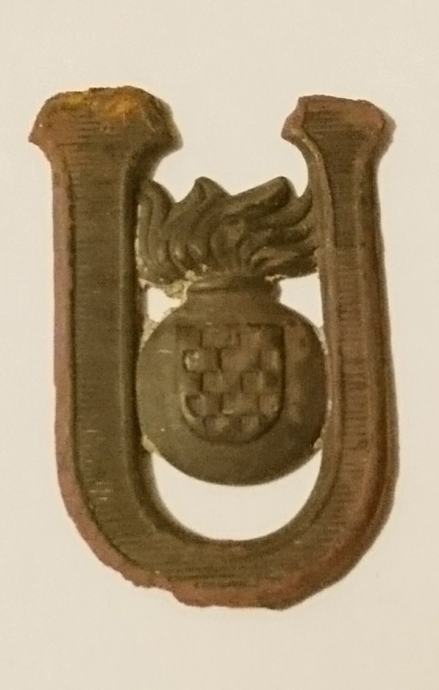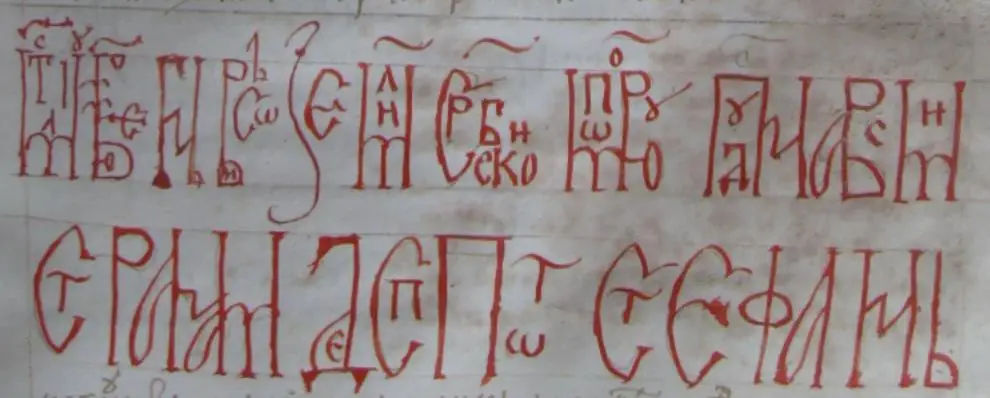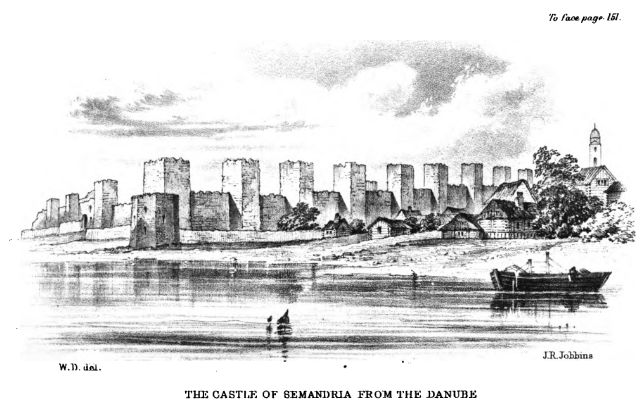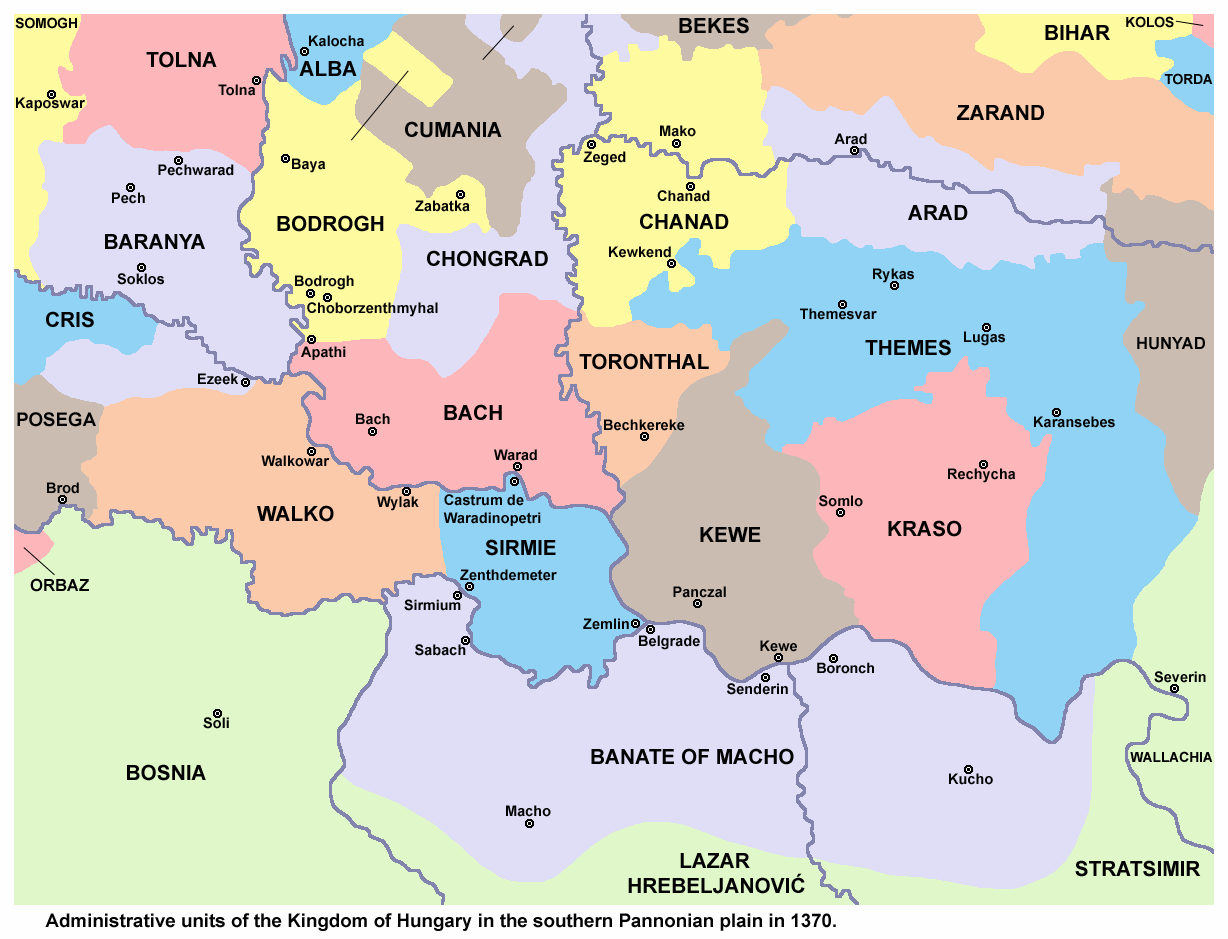Testimony of 19-year-old Ustaša Joso Orešković from a debriefing after being captured by Partisans in 1942.
Joso Orešković:
Even as a pupil at the Gospić gymansium, I joined the religious organisation “Križari”1 in 1939. There under the guise of faith we were raised in an Ustaša2 spirit. Jurica Frković3 and Juco Rukavina4 came to our meetings and held lectures against Serbs and Communists. Our motto was: In the name of Christ, kill the Antichrist. Antichrists were Serbs, Jews and Communists. We organised our assault unit which attacked leftists at night.
When war broke out and the Yugoslav army fell apart,5 we were the ones disarming it. We immediately joined the Ustašas, as we considered that our national duty. With some others from Gospić, I was ordered to the Slana camp on the island of Pag. There were mostly Jews and Serbs there, with a few leftist Croats. When I got there, I was astounded when I saw how those people were tortured. They slept under an open sky, fenced off behind wires. They were fed nothing but salted fish, but without being given water so that many went insane from thirst.
Soon a new group of prisoners arrived. The commanders ordered us to separate out 200 prisoners from the first group, take them out to the sea and kill them. I and some of my comrades couldn’t do it. They then scolded us and criticised us about being not committed enough Croats and Ustašas. They told us that whoever could not kill a Serb, Jew or Communist with joy was not an Ustaša.
To get us to kill, they would give us youngsters wine and liquer. They brought imprisoned girls before us, stripped them naked and told us that we can have any we wanted, but that after the act we had to kill them. Some youngsters, drunk on wine and enthralled by passion started killing like that. I found that disgusting and said that publicly.
After a few days a higher up from Zagreb called Luburić6 came. He came to inspect the operation of the camp. That is when the real slaughter began. The sea around Pag was red with blood. Luburić received the report that I and some others do not want to kill. Hearing that, Luburić called together all the Ustašas, lined us up and held a speech in which he said that whoever can not kill Serbs, Jews and Communists is a traitor to Ustašas.
After that he asked who the “Shitstaša” who could not kill was. I called out along with a few others. As I was the first one who called out, Luburić called me out in front of the line and asked me what kind of an Ustaša I was when I could not kill Serbs and Jews. I told him I was ready to give my life at any moment for the Poglavnik,7 that I think I could kill in battle, but that I can not kill unarmed people, especially women and children. He laughed at this and told me that our duty is to cleanse Croatia of this plague and whoever will not do so is an enemy of the Poglavnik and Croatia, same as them.
Then he called one from his escort and whispered something to him. This guy left and brought two little Jewish two-year-olds. Luburić gave me one child and told me to slaughter it. I replied that I could not. Everyone around me broke out into laughter, mocked me and shouted “Shitstaša”, instead of Ustaša. Then Luburić took out a knife and slit the throat of the child in front of me saying: “This is how it’s done”.
When the child screamed and blood sprayed, the world spun around me. I almost collapsed. One Ustaša kept me up.
When I came to a little bit, Luburić told me to raised up my right foot. I did so and under it he placed the other child. Then he commanded: “Strike”. I stomped down and crushed the child’s head. Luburić came to me, clapped me on the shoulder and said: “Bravo, you will yet make a good Ustaša”.
This is how I killed my first child. After that I would get dead drunk. In my inebriation, together with comrades, I raped some Jewish girls, then we killed them.
Afterwards I would not even need to get drunk. Later, when Slana was liquidated8 and all the prisoners killed, I was sent to the Korenica county for the cleansing. What I did there, you know…
From Šime Balen’s “Ante Pavelić” (1952), pp 78-80.
Translated by Books of Jeremiah
- Tran. note: “Križari”, Croatian for “Crusaders”, 1930-1945, a Croatian Catholic youth organisation. Founded after the previous banning of all national-based societies in 1929 and to continued the work of the Croatian Eagles’ Alliance. Their motto was “Sacrifice – Eucharist – Apostolate”. ↩︎
- Tran. note: Croatian fascist and ultranationalist organisation, active as a single organisation 1929-1945. Committed acts of terror, including organising the assassination of King Aleksandar I of Yugoslavia before WWII. Committed genocide, including running concentration, labour and extermination camps, killing mostly Serbs, Jews and Roma. ↩︎
- Tran. note: Head of the Gospić and Lika Grand County 1941-1942, head of the Livac and Zapolje Grand County 1942-1943, then again of Gospić and Lika Grand County 1942-1943. Considered one of the founders of the Jadovno concentration and extermination camp, west of Gospić. The Livac and Zapolje Grand County was also where the Jasenovac complex of concentration and extermination camps was located, with the capital of the county, Nova Gradiška, hosting the fifth sub-camp of the complex, serving as a concentration camp. ↩︎
- Tran. note: Juraj Rukavina “Juco”, leader of an armed uprising organised by Ustašas in 1932 in the Lika area. During his time in prison, friendly with the with the communists locked up in the same prison, keeping friendly relations during WWII with some of them. Extradited by the British in 1945 to Yugoslavia, convicted to death by firing squad along with some other high-ranking Ustašas. ↩︎
- Tran. note: April War in 1941, when Yugoslavia was invaded by the Axis (6-18.04.1941.) The collapse mentioned was significantly contributed to by the fifth column work of Croats, Germans, Slovenes and communists. See here for an army report of 13.04. about the events taking place. ↩︎
- Tran. note: Vjekoslav Luburić “Maks”, head of the Ustaša’s concentration and extermination camp system. Remained with Ustaša post-war guerillas to wage an insurgency against the new communist authorities. Unclear how he exfiltrated from Yugoslavia after WWII, resurfaced in Argetina in 1948. Relocated to Spain in 1949. After failing to take control of the Croatian emigration organisations after the death of Ante Pavelić, organised guerilla training camps for neo-Ustašas. Killed on 20.04.1969., multiple versions of who did it. Named by debriefed witnesses as personally killing prisoners for sport in Jasenovac concentration and extermination camp in various, hands-on ways. ↩︎
- Tran. note: “Poglavnik” was the title of Ante Pavelić, the head of Ustašas and the Independet State of Croatia. “Poglavnik” means “the head” in Croatian, similar to “Führer” in Nazi Germany. ↩︎
- Tran. note: The two concentration and extermination camps on Pag (Slana and Metajnica) were established in June 1941. and closed in August 1941. The reason was closing was the pressure by Italian military, who feared an uprising due to the brutality of Ustašas. Italians conducted examinations of the island in September 1941. due to the contamination of drinking water on Pag from all the corpses buried in shallow graves and discovered several hundred of them, which they cremated and buried the ashes where the bodies were originally buried. With the Pag extermination camps being formed and disbanded so early in the war in Yugoslavia (Independent State of Croatia was proclaimed on 10.04.1941.), they served to seed extermination practices to the rest of the NDH camp system. ↩︎



